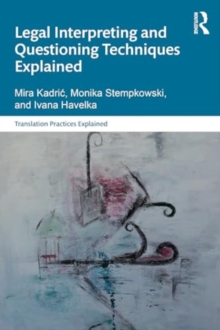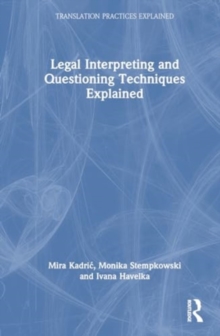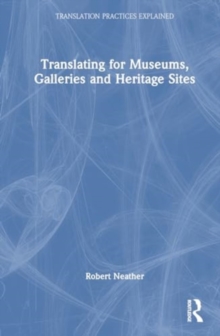
Subtitling Through Speech Recognition : Respeaking PDF
by Pablo Romero-Fresco
Part of the Translation Practices Explained series
Description
Based on sound research and first-hand experience in the field, Subtitling through Speech Recognition: Respeaking is the first book to present a comprehensive overview of the production of subtitles through speech recognition in Europe.
Topics covered include the origins of subtitling for the deaf and hard of hearing, the different methods used to provide live subtitles and the training and professional practice of respeaking around the world.
The core of the book is devoted to elaborating an in-depth respeaking course, including the skills required before, during and after the respeaking process.
The volume also offers detailed analysis of the reception of respeaking, featuring information about viewers’ preferences, comprehension and perception of respoken subtitles obtained with eye-tracking technology. Accompanying downloadable resources feature a wealth of video clips and documents designed to illustrate the material in the book and to serve as a basis for the exercises included at the end of each chapter.
The working language of the book is English, but the downloadable resources also contain sample material in Dutch, French, Galician, German, Italian and Spanish. Subtitling through Speech Recognition: Respeaking is designed for use as a coursebook for classroom practice or as a handbook for self-learning.
It will be of interest to undergraduate and postgraduate students as well as freelance and in-house language professionals.
It will also find a reading public among broadcasters, cinema, theatre and museum managers, as well as the deaf and members of deaf associations, who may use the volume to support future campaigns and enhance the quality of the speech-to-text accessibility they provide to their members.
Information
-
Download - Immediately Available
- Format:PDF
- Pages:196 pages
- Publisher:Taylor & Francis Ltd
- Publication Date:30/09/2020
- Category:
- ISBN:9781000111606
Other Formats
- Paperback / softback from £61.99
- EPUB from £53.99
- Hardback from £185.00
Information
-
Download - Immediately Available
- Format:PDF
- Pages:196 pages
- Publisher:Taylor & Francis Ltd
- Publication Date:30/09/2020
- Category:
- ISBN:9781000111606










